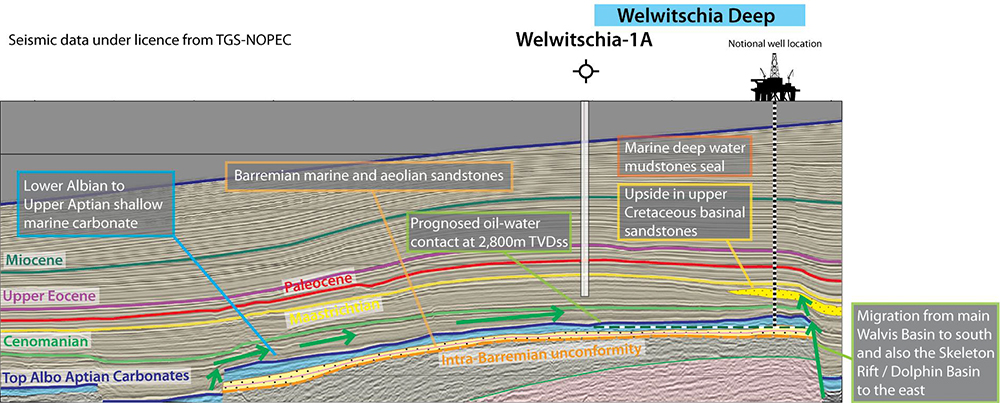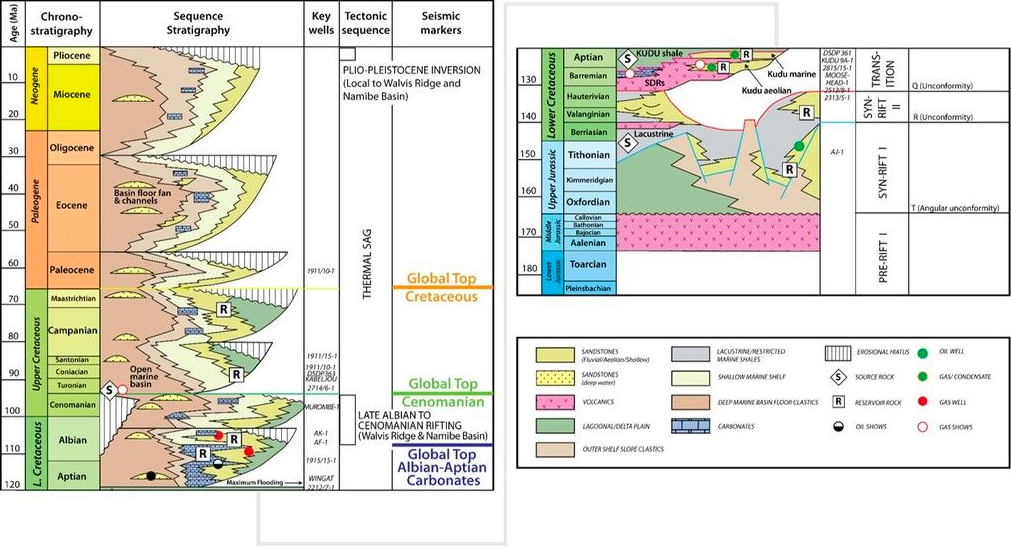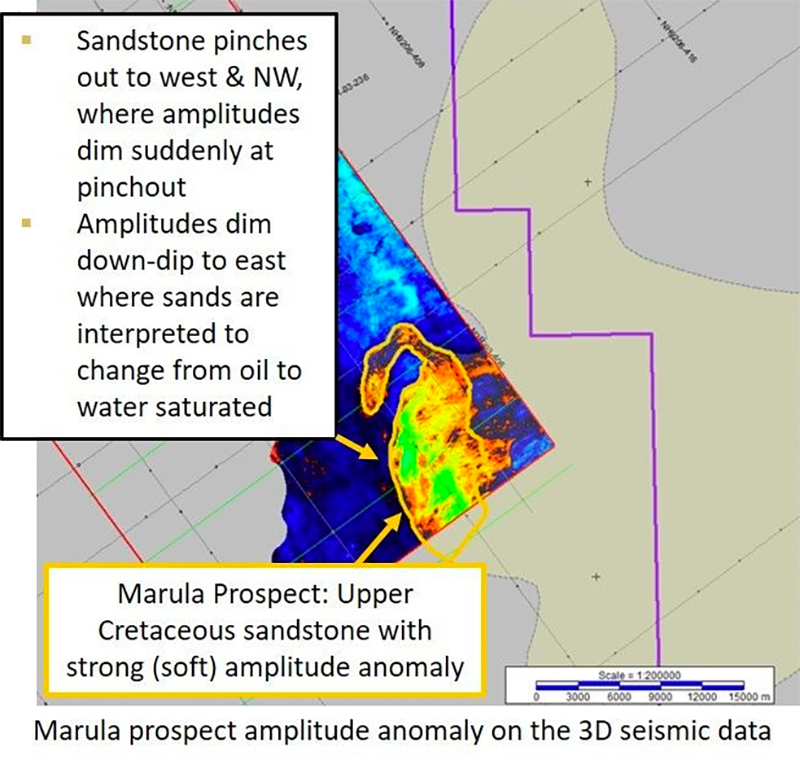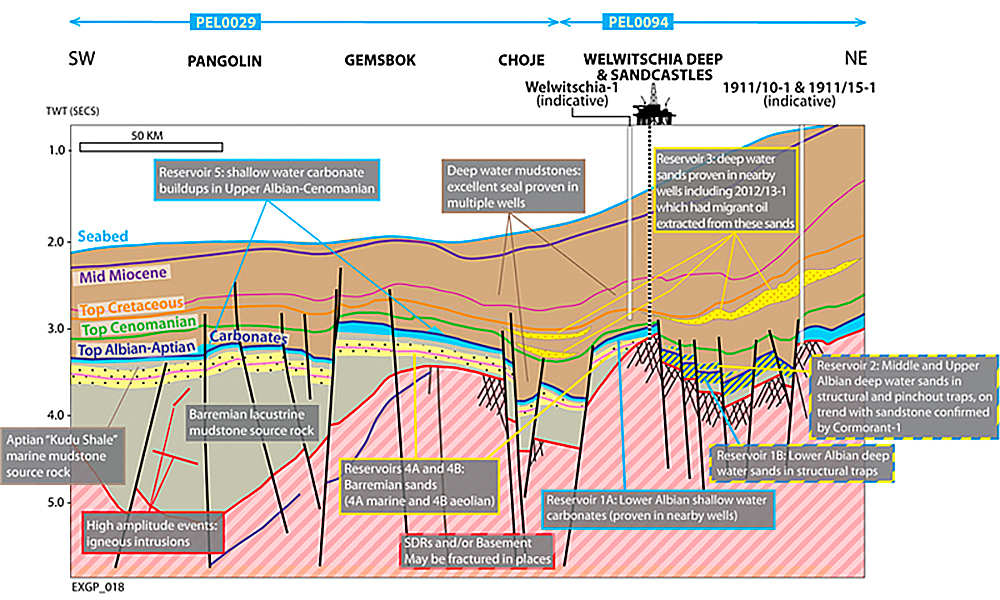* “Gross” means 100% of the resources attributable to the licence PEL0094, so does not include any resources outside of the licence.
** “Net Attributable” are those resources attributable to Global Petroleum Limited at its working interest of 78% (these are not net of the 5% royalty)
The operator of the licence is Global Petroleum Namibia Limited, a 100% subsidiary of Global Petroleum Exploration Limited, which is a 100% subsidiary of Global Petroleum Limited
“1U, 2U and 3U” denotes the unrisked low, best and high estimates respectively qualifying as Prospective Resources, and where there should be at least a 90%, 50% and 10% probability respectively that the quantities recovered will equal or exceed the estimates
“Risk Factor” is the estimated probability that exploration activities will confirm the existence of a significant accumulation of potentially recoverable petroleum. This, then, is the chance or probability of the Prospective Resources maturing into a Contingent Resource. Where a prospect could contain either oil or gas the hydrocarbon type with the higher probability of being discovered has been listed in the table.
Prospective Resources Cautionary Statement (in accordance with AIM Listing Rules): the estimated quantities of petroleum that may be potentially recovered by the application of a future development project(s) relate to undiscovered accumulations. These estimates have both an associated risk of discovery and a risk of development. Further exploration, appraisal and evaluation are required to determine the existence of a significant quantity of potentially moveable hydrocarbons.
Competent Person – Global
The petroleum resources information in this release is based on, and fairly represents, information and supporting documentation in a report compiled by Paul Howlett, who is a qualified person for the purposes of the AIM Guidance Note for Mining, Oil and Gas Companies. Paul is Consultant Exploration Manager for Global Petroleum and director/principal of Energy Explorers Limited . He has a Master’s Degree in Sedimentology from Birkbeck College of the University of London, is a Member of the American Association of Petroleum Geologists and has 28 years of experience in the oil and gas industry. Mr Howlett has consented in writing to the inclusion of the petroleum resources information in this announcement in the form and context in which it appears.
PEL0094 (Block 2011A)
As part of its assessment of the acreage prior to the application Global determined that there is significant prospectivity in the Albian Carbonates (Welwitschia Deep prospect), which the previous well drilled by Repsol in 2014 did not reach. Leads had also been identified in shallower, Upper Cretaceous sandstone reservoirs on the eastern flank of the structure (Marula prospect) and also in multiple potential reservoirs in the eastern part of the Block. In March 2020 Global licensed the 3D seismic data (see the release of 7th April 2020 for more details on this), immediately interpreted it and then issued new prospective resource and geological chance of success numbers for the Marula and Welwitschia Deep prospects (release of 20th July 2020).
As expected, the interpretation of the 3D seismic data led to increased confidence in the Marula and Welwitschia Deep prospects. The Marula prospect is a distal pinchout of Cretaceous sandstones onto the Welwitschia high. It has Best Estimate unrisked gross prospective resources of 210 million barrels of oil (164 million barrels net to Global). Global’s interpretation of the 3D seismic data has revealed a significant amplitude anomaly whose down-dip edge conforms with structure, which has a geological chance of success (risk factor) of 22%. The Welwitschia Deep prospect has also been confirmed by interpretation of the 3D seismic data and the Albian carbonate reservoir has Best Estimate unrisked gross prospective resources of 671 million barrels of oil (523 million barrels net to Global) with a geological chance of success of 14%.








